Our Hospital Neglect Attorneys Explain Your Legal Rights Following Patient Negligence in a Hospital
If your loved one suffered injuries in the hospital due to the facility’s neglect, you may be able to recover compensation. Contact our hospital neglect lawyers for a free consultation today: 888-375-9998
Considering bringing a hospital patient neglect lawsuit? Bed sores, patient falls, untreated infection and preventable injuries are not supposed to occur inside a hospital. Speak with our experienced and compassionate hospital negligence attorneys to have your questions answered.

At Senior Justice Law Firm, our hospital negligence lawyers have a combined 50 years of experience suing hospitals for neglect related injuries like patient falls and bed sores. Call or live chat with us now to see if you have a case.
All hospital patient neglect case consultations are free, there is no obligation to retain our firm, and we only get paid if you make a recovery on your case.
Start the conversation now by calling Senior Justice Law Firm for a free hospital patient neglect lawsuit case consultation: 1-888-375-9998
What is Hospital Negligence?
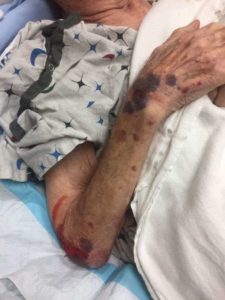
When a patient is admitted into a hospital, the hospital nurses and staff have a legal duty to ensure that patient’s safety. If the hospital staff fails to follow the standard of care and endangers, ignores or harms the patient, this is considered hospital negligence. Hospital neglect or nurse abuse are non-legal terms that fall under the umbrella of hospital negligence.
Who is Responsible for a Hospital Nurse’s Negligence?
An individual nurse’s wrongdoing is imputed to the hospital. In other words, the hospital is liable for the negligence perpetrated by its employees, staff, nurses and agents.
Why File a Hospital Patient Neglect Lawsuit?
Hospitals are usually part of large, multi-facility healthcare corporations. These companies have millions of dollars in revenue each year. Sadly, the bottom line profit is the main focus of these healthcare companies.
By bringing a hospital patient neglect lawsuit, you are getting the attention of the top levels of management. If a hospital company is forced to pay a large settlement to the family of a neglected patient, it will bring about fundamental changes in that hospital’s patient care policies.
Even if money damages are not your priority, by settling or winning your hospital patient neglect lawsuit, you are making sure this kind of neglect does not happen again.

What Kind of Hospital Patient Injuries Result in a Lawsuit?
The two most common hospital negligence injuries we litigate involve pressure sores and falls.
There are a wide range of hospital patient negligence cases; for example, if a hospital maintenance staff member negligently leaves the floor wet and slippery and thus causes a patient to slip and fall, this can be considered hospital patient negligence.
Another instance of this may occur when hospital facilities are not properly sanitized, therefore causing infections to spread, or when hospital staff fail to perform an act, such as when patients do not receive prompt and appropriate medical care from the hospital.
Below, we discuss several common signs of patient neglect which result in a lawsuit against the hospital:
Hospital-acquired pressure ulcers
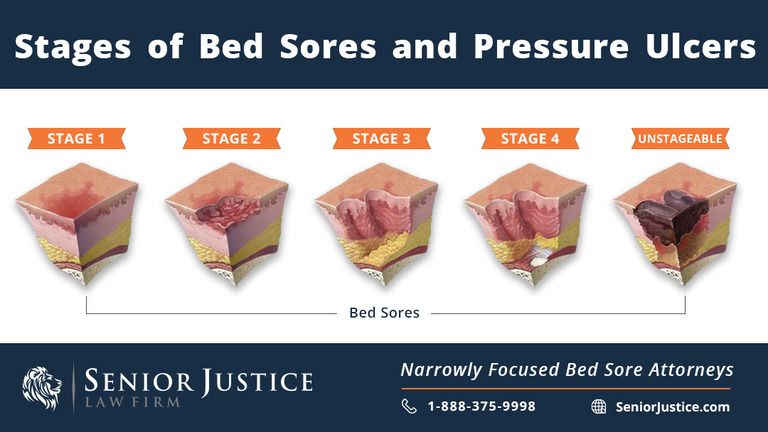
What are hospital pressure ulcers?
Pressure ulcers, also known as bedsores, are skin conditions that develop due to pressure, friction, and/or dry, fragile skin. Often occurring around the sacrum, coccyx, buttocks or the heels of patients with very limited mobility, hospital pressure ulcers are categorized into four classes depending on the ulcer’s severity.
- A Stage I pressure ulcer appears red or a color different from the surrounding skin. There are no tears to the skin at this point although the individual will experience tenderness in that area.
- A Stage II pressure ulcer involves a breaking of the skin. It may appear as a fluid-filled blister and has expanded to a deeper layer of the skin.
- Stage III pressure ulcers appear as deep craters that can reach down to the level of fat underneath the skin.
- Stage IV pressure ulcers, on the other hand, have expanded down to the muscle tissue or bone. This can cause damage to the muscle tissue and tendons in the affected area. Infections can also develop within these sores, which can make classification difficult.
Unstageable hospital pressure ulcers are wounds that are so deep, the wound care team cannot assess the depth because of discharge, slough, blood or exudate in the wound.
Pressure ulcers, if timely identified and treated, do not pose a significant health hazard, particularly at the Stage I or Stage II level. However, when pressure ulcers reach the Stage III or Stage IV stage, these injuries can lead patients to experience infection, sepsis, shock, or even death.
Since October 2008, the Centers for Medicare and Medicaid Services has refused insurance reimbursements for Stage III and Stage IV pressure ulcers acquired in hospitals. Plaintiffs in hospital pressure ulcer cases use this to highlight the fact that the government believes that such severe ulcers are avoidable and a sign of negligence on the part of the hospital.
How are pressure ulcers acquired at hospitals?
Although most often associated with nursing homes and assisted living facilities, hospital patients can also develop pressure ulcers when thorough skin assessments are not properly conducted on a routine basis, when patients with limited mobility are not turned often, or when medical equipment such as tubes cause friction on a certain area.
When pressure ulcers do develop, they can be permitted to worsen when they are not properly and timely identified and treated. This failure can be caused by staff shortages, the hospital not establishing or following pressure ulcer prevention procedures, or pressure ulcers being overlooked due to other, more severe health conditions.
Why are severe hospital-acquired pressure ulcers a sign of hospital negligence?
The preventable nature of hospital-acquired pressure ulcers was confirmed by one case study wherein a multi-prong approach including identifying patients at high risk of developing pressure ulcers, instituting a standardized procedure for those patients, and staff education resulted in an 82.8% drop in the occurrence of pressure ulcers over the course of a year.
Staff also were trained to offer alternatives to typical medical treatment. For example, when patients complained that heel boots to prevent direct pressure on the heels were uncomfortable, staff began to offer the use of a pillow. This study shows that pressure ulcers are, in fact, highly preventable if a hospital takes the appropriate steps to identify, prevent, and treat them during the early stages.
Another cause of hospital-acquired pressure ulcers is staff shortages. When staff are stretched to their limits, non-urgent tasks such as turning patients with limited mobility every two hours are often not completed. Staff shortages may also lead to hastily conducted skin assessments, if any are conducted at all, and standard pressure ulcer prevention policies may be ignored or deprioritized. Although experts agree that in certain situations, some pressure ulcers are unavoidable, often, these failures to provide proper medical care are indicative of hospital negligence.
Finally, pressure sores can be overlooked by hospital staff when a patient is admitted with another condition; for example, a broken bone or stroke.
In these situations, pressure ulcers may not initially be identified as the more pressing condition is prioritized. Once the patient is stabilized, the patient’s pressure ulcers may have advanced to Stage III or Stage IV levels, increasing the risk of infection, sepsis, and death. Though this practice may initially appear reasonable, no patient should suffer from additional, unnecessary pain or be exposed to the risk of infection as a result of a hospital’s failure to treat the entire patient.
Moreover, in certain patients, such as those with limited mobility due to a stroke, the development of pressure ulcers is foreseeable. Thus, in those situations, a hospital should implement pressure ulcer prevention measures and perform regular, thorough skin assessments.
Once admitted into a hospital for any condition, hospitals owe a duty of care to patients to provide them with reasonable medical care. While the development of pressure ulcers may be unavoidable in certain situations, a hospital’s failure to first prevent, then timely treat, a pressure ulcer that forms on their watch will, in most cases, constitute negligence on the part of the hospital.
More legal questions on a hospital pressure ulcer case?
Contact the hospital negligence attorneys at Senior Justice Law Firm today by live chatting with our team, or calling us at 1-888-375-9998.

Hospital Patient Falls
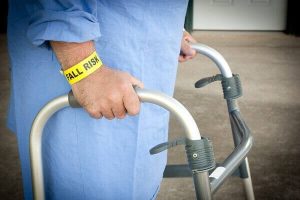
According to the Agency for Healthcare Research and Quality, approximately 1 million patients experience falls in hospitals every year in the United States. The same organization has claimed that about one half of those falls can be prevented.
In addition, as with hospital-acquired pressure ulcers, in October 2008, the Centers for Medicare and Medicaid Services started to refuse to reimburse hospitals for costs associated with fatal hospital falls. These events are thus considered incidents that should never occur and are assumed to be a sign of hospital negligence. Even when falls are not fatal, it can leave patients with scars, limited mobility for the rest of their lives, or cause anxiety that discourages mobility.
How do falls happen in hospitals?
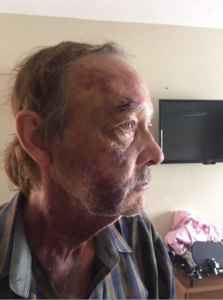
Falls occur in a variety of ways in hospitals and are not always limited to elderly patients with requiring assistance with mobility or transferring from bed. Falls are often caused by a combination of factors such as the condition of the patient, environmental factors, inadequate fall precautions and lack of hospital oversight/staff training.
Environmental factors often play a key role in hospital falls. An obvious example would be an incident wherein maintenance staff leave a floor wet and slippery, causing a patient to slip and fall. However, other, less obvious environmental factors can also contribute to causing a hospital fall, such as:
- floors made of slippery material,
- the failure to use non-slip socks,
- the failure to provide non-slip mat for patients determined to be at high risk of falls,
- lack of bed rails,
- uneven flooring,
- dim lighting or lack of lighting,
- and corridors or stairwells that are obstructed or cluttered.
How do hospitals stop patients from falling?
Medication that causes disorientation or drowsiness can also contribute to or cause hospital falls. For this reason, patients who are prescribed medication that could make them drowsy or disoriented must be properly monitored and supervised. This includes ensuring that patients are not overmedicated, routine welfare checks are conducted, and patients are assisted with toileting or transferring when necessary.
Lack of supervision of elderly patients can also lead to preventable falls, often with serious consequences. Without routine monitoring and assistance with toileting, elderly patients with limited mobility may try to transport themselves from their bed to a wheelchair or to stand without assistance.
Adequate monitoring requires that hospitals are sufficiently staffed and that staff members are trained properly in fall prevention measures and procedures. This also requires that hospitals conduct continuous training of its staff to ensure that fall prevention procedures are developed and implemented properly.
In addition, lack of access to call buttons or a significant delay in responding to call buttons may also motivate patients to attempt to transport themselves in and out of bed or to and from the toilet, increasing the risk of hospital falls. Similarly, malnutrition and dehydration can contribute to falls as well as poorly managed blood sugar levels. These are all signs that should be monitored by hospital staff on a regular basis for all patients in their care.
Furthermore, unlike hospital-acquired pressure ulcers, there is no one common cause of hospital falls. Thus, hospitals by law must develop individualized plans for residents who have been identified as high fall risks, as falls typically occur due to a variety of factors.
Why are some hospital falls a sign of hospital negligence?
As mentioned above, hospitals owe their patients a legal duty to provide reasonable medical care. This includes fall prevention in certain circumstances; although some falls may not be preventable, at least one third of hospital falls are considered to be preventable. In addition, any fatal falls are generally considered a result of hospital negligence.
When patients are admitted to a hospital, there is an assumption that patients will be properly monitored and assisted with transferring and toileting as needed. In addition, when patients have been medicated in such a way that they are likely to be disoriented or drowsy, the hospital is on notice that there is a higher risk of that patient suffering a fall. The failure to ensure that such patients are closely monitored while medicated and in the hospital’s care is a sign that the hospital did not provide that patient with a reasonable level of medical care.
Hospitals that are short staffed, have staff that are not properly and continuously trained in fall prevention measures, and do not properly address environmental factors that can cause a patient to suffer a fall have also failed to provide that patient with a reasonable level of care. These are factors that are well within the hospital’s control. Hospitals are aware that effective fall prevention policies require all of the above as well as tailored fall prevention plans for each individual patient.
Do you believe you have a potential hospital fall lawsuit?
Contact our hospital negligence lawyers today by live chatting with our team, or calling us at 1-888-375-9998 for a free consultation.
Experience Matters
Surgical Puncture Errors
Surgical puncture errors refer to events when doctors inadvertently puncture an organ, nerve, artery, or muscle during a surgical procedure. This can be due to overworked or underqualified staff, rushed procedures, and/or confusing a nerve for an artery or vice versa. Although many patients may assume that such surgical errors only occur in complicated, high risk procedures, this is not the case. For example, a routine colonoscopy can lead to a punctured bowel.
When organs are accidentally punctured during surgical procedures, the patient suddenly risks losing function in that organ. In addition, the organ will begin to leak fluid and blood, which may in turn cause complications. Even when organ punctures are not life-threatening, they will inevitably slow the healing process, force the patient to incur additional medical expenses, and may result in life-long complications for the patient.
Hospital Patient Burns
Patients can also suffer burns while they are hospitalized, usually due to heating pads that are heated to dangerously hot levels. When heating pads are negligently left on the skin, unmonitored, hospital patient burns can occur.
One patient at a hospital received significant burns after heating pads were placed on the patient’s legs while the patient was sedated after a medical procedure. The inability of the patient to react to the heat caused severe burns. Another hospital found that several patients experienced burns after isopropyl alcohol pooled on electronic heating pads. More concerning, these burns were initially diagnosed as pressure ulcers.
Finally, burns can also result when the temperature of foods or baths are not properly monitored with a thermometer. This can cause serious burns. Additionally, our attorneys have handled numerous hot coffee and hot tea hospital burn matters.
Hospital Air Embolism Injuries
Air embolisms are events wherein air blocks the vein or artery. Hospital-acquired air embolisms usually occur as a result of an invasive surgical procedure and often result in the patient’s death. As air embolisms require that air be introduced into the veins or arteries, they often occur in procedures that involve the insertion of a wire or catheter into a vein or artery. These procedures first insert a sheath into the vein or artery to guide the wire or catheter, which significantly increases the risk of creating an air embolism.
In addition, following proper procedures in removing lines that have been placed directly into a patient’s vein or artery is critical to prevent the development of air embolisms.
Other causes of air embolisms are trauma, such as when ventilators push air into the veins or arteries via very damaged lungs.
Hospital air embolism injuries should not occur and deserve immediate investigation by the patient’s family.
Iatrogenic Pneumothorax Hospital Injuries
Pneumothorax is a condition wherein air is introduced into the cavity between the lungs and the chest wall, and that air cannot escape naturally. Although pneumothoraxes can occur due to trauma to the chest, in hospitals, they can occur when lines are inserted into a major artery in the neck or when lung biopsies are conducted.
Thoracentensis, a procedure which involves the insertion of a needle into the cavity between the lungs and chest wall to drain fluid out of that area, is also a leading cause of hospital-acquired pneumothorax. Finally, ventilators have also been a cause of pneumothorax until recently, when more advanced models have allowed patients to be ventilated at a lower pressure.
Hospital Sepsis Cases
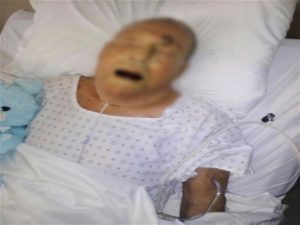
Sepsis is a leading cause of death in hospitals, and is indicative of a severe, body-wide infection. Sepsis in the bloodstream can lead to septic shock, which is often lethal.
Sepsis is a condition where the body’s immune system attempts to fight an infection which leads to inflammation throughout the body, including the vital organs. The immune system response leads to impaired blood flow, either due to the formation of blood clots or leaking blood vessels. This in turn prevents blood from flowing to organs, leading them to first become damaged, then eventually shut down.
Hospital sepsis can be caused by any infection. In hospitals, patients with compromised immune systems are exposed to bacteria and infections, which increases the likelihood that they may develop sepsis. In many cases, ensuring that patients are not exhibiting signs of sepsis and that cases of sepsis are timely addressed are vital. When these signs of infection are missed, sepsis can affect the organs and may lead to death.
Hospital Patient Neglect Injury? Take the Next Step by Contacting Our Hospital Neglect Attorneys
The above hospital-acquired injuries are often caused by hospital negligence. Many of the above injuries are considered events that should never occur in hospitals by the Federal Government.
If you or a loved one has suffered one of these events at a hospital, we encourage you to contact the attorneys at Senior Justice Law Firm. Our team of experienced hospital neglect attorneys may be able to help you with your case. Please do not hesitate to call us for a consultation today.
Contact Senior Justice Law Firm today by live chatting with our team, or calling us at 1-888-375-9998.

